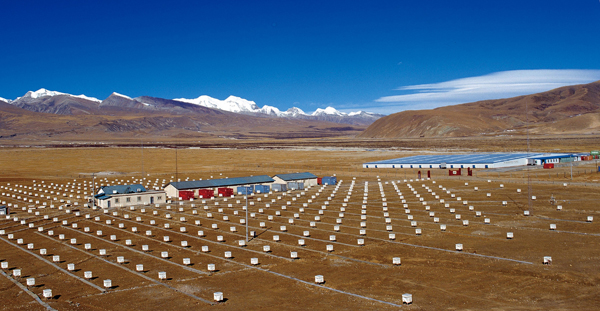An enterprise protecting traditional Tibetan paper skills
Tibetan papermaking has a long history and uses unique raw materials.
"Some of the raw materials are plants growing at altitudes of 4,000 to 5,000 meters. They are unique. Tibetan paper has been made for thousands of years, but for a while, hand-made paper has basically disappeared from the market," Longri Gyatso, head of the Tibet Youge Tsang Industry and Trade Company, said with some regret.
In 2017, Longri Gyatso found a national intangible cultural heritage inheritor named Gyapa in Nyemo County and hired him to teach handmade paper production for his company. The master taught them for half a year and often personally came to the company to guide Longri Gyatso and his team whenever they encountered technical issues.
After several years of study and research, the company's paper production skills are now relatively mature. Products include notebooks, paper, and lanterns all made with Tibetan paper, and they are very popular on the market.
"We are preparing for mass production and to make Tibetan paper as good as Xuan paper," Longri Gyatso said confidently.
Inside the company's factory building, workers are dressed in blue uniforms. They are skilled in pulping, smoothing, polishing, and other processes involved in papermaking. The large factory building is equipped with many finished Tibetan paper products and products made from Tibetan paper such as notebooks.
Talking about the next step, Longri Gyatso said: "Xuan paper in inland China does very well. We must study more. If possible, I will bring in production technology teachers from the inland and combine their technology with the local skills of Tibet. Then I will optimize it, and it should have a good effect."
Editor: Tommy Tan.
Tibet Stories

Emancipated serf Nyima Wanggyur: “I want to see the new changes of the motherland!”
“Before democratic reforms, my family had no land, so we had always been Duchung. From the ...
Editor’s Choice
- Commentary: 14th Dalai Lama's ebbing influence in Tibet
- Top political adviser praises work of religious committee
- Qinghai discovers black stork breeding nest for the first time
- 11th Panchen Lama conducts research and Buddhist activities in Lhasa
- Luxembourg scholar: Opening Tibet brings cultural prosperity







